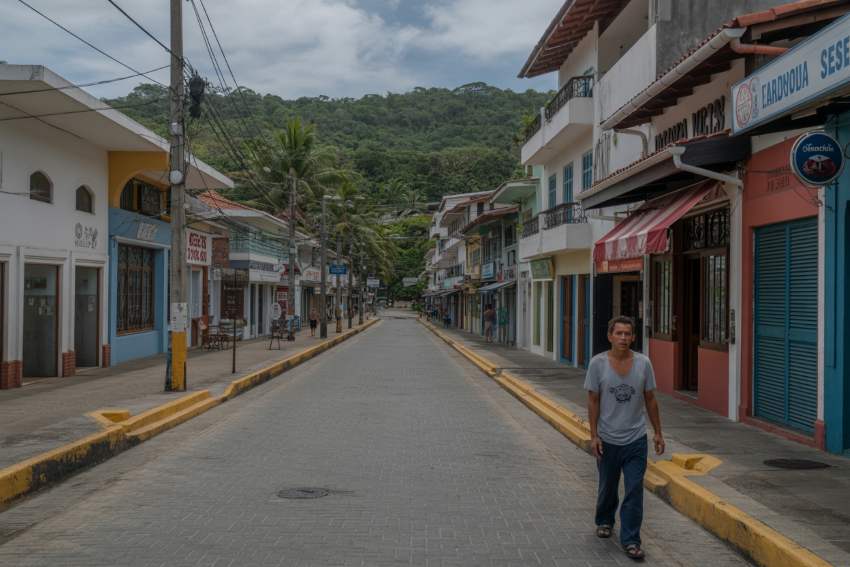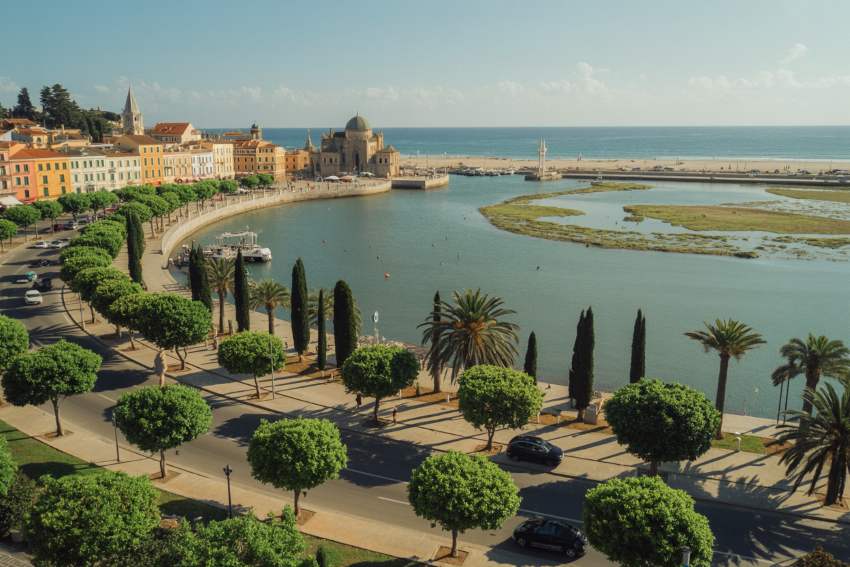Tourism Crisis in Costa Rica: Thousands of Jobs Lost, What’s Really Behind the Drop? – Travel And Tour World

Report on the Costa Rican Tourism Sector Crisis and its Implications for Sustainable Development Goals
Executive Summary
In 2025, Costa Rica’s tourism sector is facing a significant crisis, marked by a substantial loss of employment and a decline in international visitor arrivals. This downturn poses a direct threat to the nation’s economic stability and its progress towards key Sustainable Development Goals (SDGs), particularly SDG 8 (Decent Work and Economic Growth) and SDG 1 (No Poverty). The loss of over 22,000 jobs has severely impacted rural and coastal communities, challenging the principles of inclusive growth and sustainable community development as outlined in SDG 10 (Reduced Inequalities) and SDG 11 (Sustainable Cities and Communities).
Analysis of the Tourism Sector Downturn
Employment and Arrival Statistics
Data from the third quarter of 2025 indicates a severe contraction in the tourism industry, undermining SDG 8. Key indicators include:
- Job Losses: Employment in the sector decreased from 189,093 in 2024 to 166,923 in 2025, a net loss of 22,170 jobs.
- Decline in Arrivals: International tourist arrivals fell by 1.8% through October 2025 compared to the previous year.
- Visitor Shortfall: Between January and July 2025, Costa Rica received 50,000 fewer international visitors than during the same period in 2024.
Socio-Economic Impact on Communities
The economic downturn has disproportionately affected regions heavily reliant on tourism, such as Guanacaste and the Central Pacific. This situation exacerbates regional disparities, working against SDG 10 (Reduced Inequalities). The loss of reliable income for local guides, hospitality staff, and transport workers threatens to increase poverty rates, directly impacting the achievement of SDG 1 (No Poverty). The crisis jeopardizes the economic viability of these communities, a core concern of SDG 11 (Sustainable Cities and Communities).
Causal Factors of the Economic Decline
Economic Pressures
Several economic factors have contributed to the crisis, creating an unstable environment for the sustainable economic growth envisioned in SDG 8.
- Reduced Visitor Spending: International tourists spent $71 million less in the first half of 2025 compared to the same period in 2024.
- Currency Appreciation: A stronger Costa Rican colón against the US dollar has reduced the profitability of businesses dependent on foreign currency.
- Operational Downturn: Tourism operators in areas like Quepos and Nosara have reported a 20% decline in work since late 2024.
Security and Visitor Confidence
Rising security concerns have deterred international travelers, particularly from North America. This issue directly relates to SDG 16 (Peace, Justice and Strong Institutions), which emphasizes the need for safe and secure societies to foster sustainable development. The decline in visitor confidence undermines the stability required for long-term investment and growth in the tourism sector.
Strategic Responses and Alignment with SDGs
Government and Industry Initiatives
In response, government and industry leaders are proposing measures aimed at reviving the sector. These solutions align with multiple SDGs and focus on creating a resilient and sustainable tourism model.
- Infrastructure Development: Improving roads and transportation networks to enhance accessibility and support community development (SDG 9 and SDG 11).
- Enhanced Security Measures: Increasing safety protocols to restore tourist confidence, a critical component for achieving SDG 16.
- Targeted Marketing Campaigns: Ramping up promotional efforts to attract new investment and visitors, stimulating economic activity (SDG 8).
- Strengthening Partnerships: Collaborating with airlines to expand international flight routes, reflecting the importance of partnerships for achieving sustainable goals (SDG 17).
Challenges to the Sustainable Ecotourism Model
The crisis calls into question the long-term sustainability of Costa Rica’s renowned ecotourism model. The current challenges highlight the need for a diversified and resilient economic strategy that protects both livelihoods (SDG 8) and the nation’s rich biodiversity (SDG 14 and SDG 15), ensuring that economic pressures do not lead to environmental degradation.
Forward Outlook and Recommendations
Projections and Risks
Industry experts warn that without immediate and effective intervention, tourist arrivals could decline by 15% to 20% by the end of 2025. Such a decline would deepen the economic crisis and further impede progress on SDGs 1 and 8, particularly in vulnerable communities.
Path to Recovery and SDG Realignment
The future of Costa Rica’s tourism industry depends on a concerted effort from both public and private sectors, embodying the spirit of SDG 17 (Partnerships for the Goals). Recovery requires a strategy that not only addresses immediate economic concerns but also reinforces the country’s commitment to sustainable development. The focus must be on creating a safe, attractive, and resilient tourism destination that provides decent work, reduces inequality, and fosters peaceful and inclusive communities, thereby realigning the sector’s trajectory with the 2030 Agenda for Sustainable Development.
Analysis of Sustainable Development Goals in the Article
1. Which SDGs are addressed or connected to the issues highlighted in the article?
-
SDG 1: No Poverty
The article connects the tourism crisis directly to the risk of increased poverty, especially in remote and coastal communities where tourism is the primary source of income. The loss of jobs leaves many families without a reliable income, pushing them towards economic hardship.
-
SDG 8: Decent Work and Economic Growth
This is the most central SDG in the article. The text focuses on the massive job losses (almost 22,000) in the tourism sector, the decline in tourist arrivals and spending, and the overall negative impact on Costa Rica’s economic stability. It also discusses the need to promote sustainable tourism to create jobs.
-
SDG 9: Industry, Innovation and Infrastructure
The article mentions that one of the proposed solutions to revive the tourism sector is “improving infrastructure, such as better roads and transportation networks.” This directly relates to the goal of developing quality, reliable, and sustainable infrastructure to support economic development.
-
SDG 11: Sustainable Cities and Communities
The crisis is shown to have a disproportionate effect on specific communities, particularly in “rural and coastal areas” like Guanacaste and the Central Pacific. The article highlights the economic strain in these regions and the risk of migration to “urban centres,” which impacts the sustainability and economic balance of these communities.
-
SDG 16: Peace, Justice and Strong Institutions
The article identifies “rising security concerns” and “increased crime in areas that were once considered safe” as a key factor contributing to the decline in tourism. This connects to the goal of ensuring public safety and reducing crime to foster peaceful and inclusive societies for sustainable development.
2. What specific targets under those SDGs can be identified based on the article’s content?
-
SDG 1: No Poverty
- Target 1.2: By 2030, reduce at least by half the proportion of men, women and children of all ages living in poverty. The article highlights a direct threat to this target by stating that without a quick recovery, “these communities risk falling deeper into poverty.”
-
SDG 8: Decent Work and Economic Growth
- Target 8.5: By 2030, achieve full and productive employment and decent work for all. The loss of over 22,000 jobs in the tourism sector represents a significant setback for achieving this target in Costa Rica.
- Target 8.9: By 2030, devise and implement policies to promote sustainable tourism that creates jobs. The article’s entire theme revolves around the crisis in the tourism sector and the need for government and industry action to revive it, questioning “the sustainability of Costa Rica’s ecotourism model.”
-
SDG 9: Industry, Innovation and Infrastructure
- Target 9.1: Develop quality, reliable, sustainable and resilient infrastructure, including regional and transborder infrastructure, to support economic development. The call to action for “improving infrastructure, such as better roads and transportation networks” directly aligns with this target as a means to revive the tourism economy.
-
SDG 11: Sustainable Cities and Communities
- Target 11.a: Support positive economic, social and environmental links between urban, peri-urban and rural areas. The article describes a breakdown in these links, as the economic downturn in rural and coastal areas could lead to “many people potentially migrating to urban centres in search of better opportunities.”
-
SDG 16: Peace, Justice and Strong Institutions
- Target 16.1: Significantly reduce all forms of violence and related death rates everywhere. The article points to a failure in this area as a cause of the tourism crisis, citing “increased crime in areas that were once considered safe” as a deterrent for travellers.
3. Are there any indicators mentioned or implied in the article that can be used to measure progress towards the identified targets?
-
For SDG 8 (Targets 8.5 and 8.9):
The article provides several direct and implied quantitative indicators to measure the health of the tourism sector and its contribution to employment.
- Number of jobs in the tourism sector: The article explicitly states a drop from 189,093 jobs in 2024 to 166,923 in 2025.
- Change in tourist arrivals: A decline of 1.8% through October is mentioned, along with a specific figure of “50,000 fewer international visitors” from January to July 2025 compared to 2024.
- Tourist expenditure: The article notes that tourists “spent $71 million less” in the first half of 2025 compared to the previous year.
- Regional economic activity: A “20% drop in tourism-related work” is reported in specific areas like Quepos and Nosara.
-
For SDG 16 (Target 16.1):
While not providing a specific crime statistic, the article implies an important qualitative and quantitative indicator.
- Crime rates in tourist destinations: The mention of “increased crime” and “rising security concerns” suggests that tracking crime statistics in these key areas is a crucial indicator for measuring progress towards making these locations safe again.
-
For SDG 1 (Target 1.2):
The article implies an indicator related to poverty in specific regions.
- Poverty rates in tourism-dependent communities: The statement that communities “risk falling deeper into poverty” implies that monitoring income levels and poverty rates in areas like Guanacaste and the Central Pacific would be a key indicator of the social impact of the tourism crisis.
4. Summary Table of SDGs, Targets, and Indicators
| SDGs | Targets | Indicators Identified in the Article |
|---|---|---|
| SDG 1: No Poverty | 1.2: Reduce poverty in all its dimensions. | Implied: Rate of poverty in tourism-dependent communities (e.g., Guanacaste, Central Pacific). |
| SDG 8: Decent Work and Economic Growth | 8.5: Achieve full and productive employment and decent work for all. | Total number of jobs in the tourism sector (dropped from 189,093 to 166,923). |
| 8.9: Promote sustainable tourism that creates jobs. |
|
|
| SDG 9: Industry, Innovation and Infrastructure | 9.1: Develop quality, reliable, sustainable and resilient infrastructure. | Implied: Quality of transportation infrastructure (roads and networks) needing improvement. |
| SDG 11: Sustainable Cities and Communities | 11.a: Support positive economic links between urban and rural areas. | Implied: Rate of migration from rural/coastal areas to urban centers due to economic strain. |
| SDG 16: Peace, Justice and Strong Institutions | 16.1: Significantly reduce all forms of violence. | Implied: Crime rates and perception of safety in popular tourist destinations. |
Source: travelandtourworld.com
What is Your Reaction?
 Like
0
Like
0
 Dislike
0
Dislike
0
 Love
0
Love
0
 Funny
0
Funny
0
 Angry
0
Angry
0
 Sad
0
Sad
0
 Wow
0
Wow
0




















































.jpg.webp?itok=0ZsAnae9#)


























